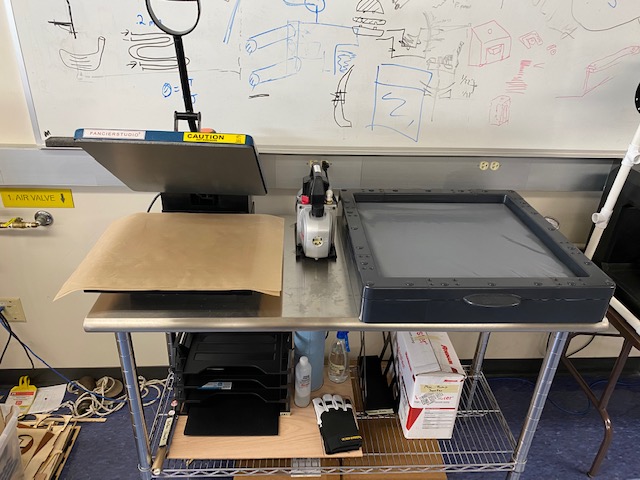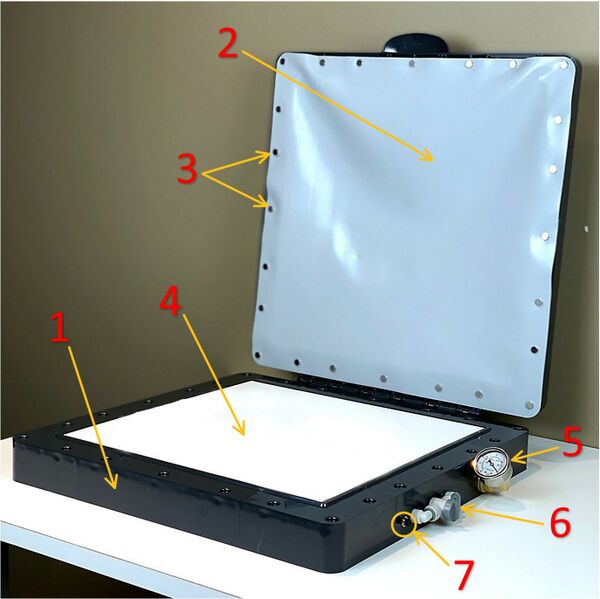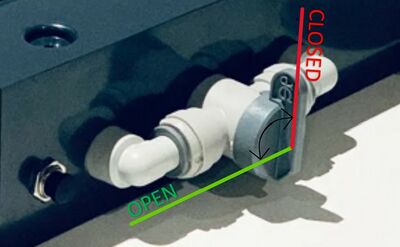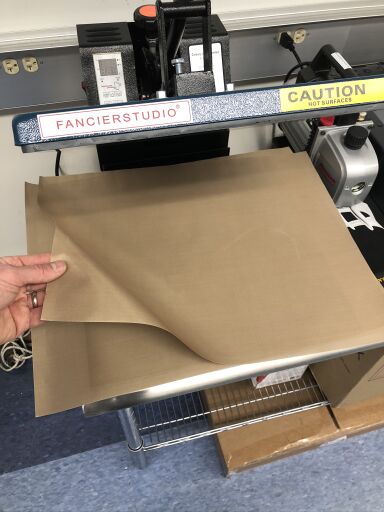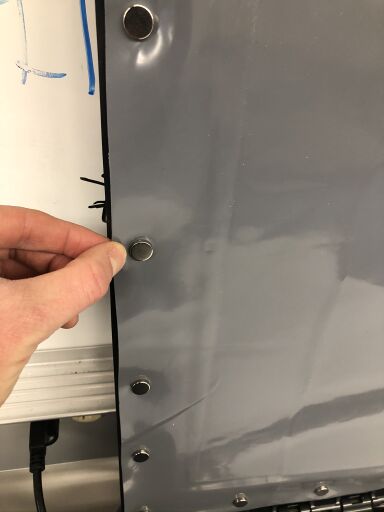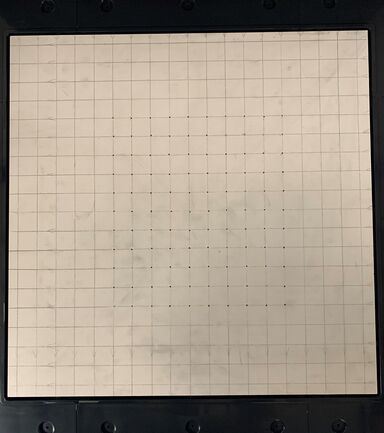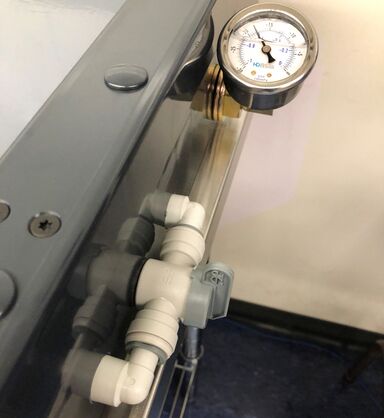Vacuum Forming
Introduction[edit | edit source]
Industry Uses[edit | edit source]
Vacuum forming technology is a low cost and a highly efficient tool used to replicate, scale, or prototype any desired shapes using a range of materials. The HD 2424 Vacuum Former Starter Kit implements a magnetic lock system to secure and pressurize air within the chamber, allowing the thermoplastic sheet material to stretch and form to a mold and create a part. Being an alternative for 3D printing, vacuum forming has an advantage against complex edges and saves time by forming multiple units in a short process.
Many vacuum forming processes include: dental, aerospace, special effects, military, Holster Making, Knife Sheath Forming, Hobbyists, Cosplay, Costume Makers, Orthotics, small prototyping and many other types of thermoforming.[1]
Vacuum Forming Machines Available[edit | edit source]
The available mechanical engineering vacuum former is located in the Rapid Prototyping Lab (Room 125) inside the Gauss Johnson Engineering Lab. The sign up process to use these machines is based on a first come first serve basis. For more information on how to use these machines find a graduate student and/or go to the IEW office (GJ 113).
HD 2424 Vacuum Former - Starter Kit[edit | edit source]
2) High Temp Heavy Duty Membrane 3) Neodymium Magnets 4) Heatsink board 5) Premium Quality Liquid Filled Vacuum Gauge 6) ON-OFF Valve 7) Vacuum Release Vent
Thermoplastics for Vacuum Forming Applications[edit | edit source]
Kydex Thermoform Plastic Sheets are a line of thermoplastic acrylic-polyvinyl chloride materials. For some applications it is used as replacement for leather, where it has the following advantages: waterproof, scratch resistant, holds its shape better, and will not stretch or shrink under normal conditions lower friction. Applications: Aircraft Bulkhead Partitions, Firearm Holsters, Sheaths, and for Knives.
Boltaron is a proprietary, fire retardant, extruded thermoplastic alloy offering extreme durability, chemical resistance, and a UL 94 V-0 rating while exhibiting exceptional physical properties. Applications: Firearm Holsters, Medical Device Enclosures, Electronic Equipment Housings, Kiosk Housings, Store Fixtures and Displays Kennel Housings
Because ABS Thermoform Plastic Sheets is low cost and has superior physical properties, ABS (Acrylonitrile-Butadine-Styrene) is one of the most popular thermoform plastics used for vacuum forming. ABS produces detailed parts that are tougher and more rigid than other plastics. It is manufactured in both black and white with a “haircell” texture on one side that helps resist and hide scratches, making ABS a popular choice for parts that need to stand up to heavy use. Applications: Prototypes and Production Parts, Plaster and Concrete Molds, Drone Parts, Theater Props, Cosplay
High Impact Styrene is an inexpensive thermoform plastic that is easy to work with and produces excellent vacuum forming results, making styrene the perfect "beginner plastic" for folks who are new to vacuum forming. High Impact Styrene is capable of reproducing intricate mold details along with complex part geometries. It is smooth on both sides, comes in opaque white, and readily accepts paint. Applications: Prototypes, Packaging, Soap and Candle Molds, Scale Models, Theater Props, Cosplay
PETG Thermoform Plastic Sheets (Polyethylene terephthalate) are a transparent thermoform plastic that offers cost-effective vacuum formed parts with deep draws and precise details. PETG is significantly less prone to cracking than acrylic (Plexiglas). It is used for vacuum forming all kinds of clear plastic parts - especially blister and clamshell packaging and point-of-purchase retail displays. PETG is also FDA food safe and is commonly used to make molds and other kitchen products. Applications: Blister and Clamshell Packaging, Candy and Chocolate Molds, Theater Props, Cosplay
Wonderflex Sheets look like a piece of plastic, but it becomes soft and malleable when heated. It can be shaped by hand or over a mold while hot. Once it cools down it hardens retaining the shape. It can be re-heated and reshaped as many times as necessary, or worked in sections. It glues to itself if enough pressure is applied. It can be cut with scissors and finished with paint, gluing fabric on top, or any other method. It can be heated with a heat gun, a microwave oven, or dipped in hot water. Applications: Theater Props, Cosplay
Worbla Sheets use hot air, water or steam (min.90 degrees C) to shape the plastic however you want. The material is heat-formable and solvent-free. Scraps can be conditioned and 100% re-blended, so there is almost no waste. These leftovers can be molded just like putty. Applications: Theater Props, Cosplay
Polycarbonate (often sold under the trade name "Lexan") is the virtually unbreakable thermoform plastic used to make bulletproof glass. Thin-gauge, transparent Polycarbonate is the material of choice for folks who build ultra light, thin plastic parts that are exposed to a lot of abuse. Applications: Prototypes, RC Car Bodies, Slot Car Bodies, Model Airplane Parts, Drone Bodies, Drone Parts
Vacuum Forming Video Help[edit | edit source]https://www.hdindustrialdesign.com/pages/media Set-up / Procedure[edit | edit source]Heat Press[edit | edit source]1. Before beginning, the user of the heat press MUST be wearing the provided heat resistant gloves throughout the whole process of heat pressing. 2. Place and align the product to best fit, as well as any provided Teflon sheets onto the press to avoid material residue. 3. Plug in the power supply for the heat press and turn the switch on. The switch will be found on the left side of the heat press. 4. Once the press is turned on, let the machine pre-heat to its set temperature. 5. On the front panel, the two settings for TEMP and TIME must be adjusted to the user's preference. Look up the correct temperature in the table below.
6. Lower the press onto the material while pushing down to lock and secure the press. 7. When the machine timer sounds on at zero seconds, gently lift the press. 8. Power off the machine and remove your finished product from the heat press while cleaning and disposing any left over material around the station. Vacuum Former[edit | edit source]Before operating the vacuum former, ensure the high temperature membrane is installed correctly for a complete product to work. While placed on the former, the corners of the membrane must be aligned and secured by the magnetic system. Each magnet should sit well within their designated slots to seal the air to create a product. To operate the vacuum former: 1. Place the product mold in the center of the heat sink board to allow an even surface area between the sealed air and the thermoplastic sheet material.
2. While closing the former, hold down the lid to seal away any excess air and continue to press down until the forming process is complete. 3. To begin vacuum forming a product, turn the valve to the OPEN position and power on the pump. The power switch of the pump is located on the back end of the handle, near the power adapter. (The valve should be sealed or aligned vertically before operating the vacuum former). 4. Once the pump has removed all the air from the work area and has been fully pressurized to around -26 inHg, turn the valve to the CLOSED position and power off the pump. Allow material to cool before releasing pressure. 5. (OPTIONAL) To cool off your vacuum formed part faster, use the provided spray bottle to spray small amounts of cool water onto your part which is under the membrane. Then use the provided paper towels to dry the water off. The membrane is completely water proof so there is no risk of damaging it, but be weary of any water getting into the air pump as this could damage it. Always dry off any water with the paper towels. If the spray bottle is empty, refill it and replace the bottle on the storage shelf. 6. Finally, free the air by pushing and holding down the release found on the right side of the vacuum forming machine. Open the lid and remove the finished product and any left over material at the station. 7. After your vacuum forming is complete, clean the membrane with the spray bottle and paper towels or a sponge. This will ensure a tight vacuum seal for the next user.
Troubleshooting[edit | edit source]
|
